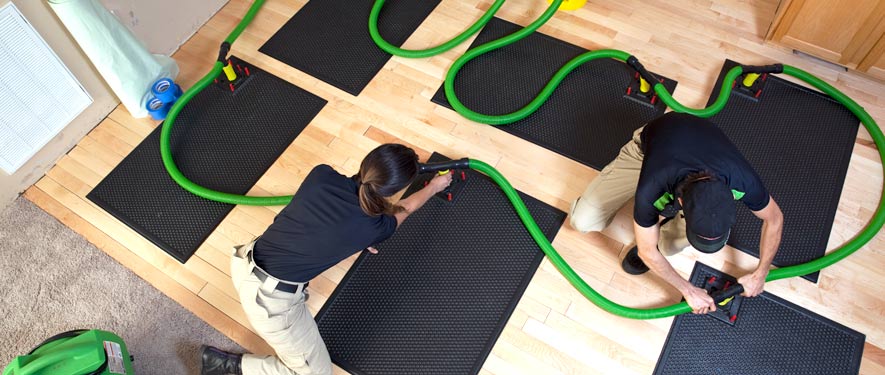
Step 4: Drying and Dehumidification
Our Water Damage Restoration Process
Get Your Home Back to Normal
Extraction is an important part of the water restoration process, but it's by no means the end of it. Although the excess water has been removed, you'll notice that floors, walls and other materials are still wet to the touch. Many building materials are porous, meaning they absorb and retain water. In many instances, the water is trapped behind walls and underneath floors, where they cause long-term structural damage and encourage mold growth.
Our technicians have the training and the equipment to detect and dry wet materials in your home. The process we use speeds up the evaporation process and draws the moisture from the air, allowing us to efficiently dry out your home. Our franchise has hundreds of air movers, dehumidifiers, and other equipment, so we are prepared to handle any size disaster.
Drying / Dehumidification
Our Professionals will use room measurements, temperature, and relative humidity to determine the optimal number of air movers and dehumidifiers to dry your home or business. We’ll carefully monitor the progress using moisture meters until the materials return to acceptable drying goals.
- Use Dehumidification Equipment
- Use Monitoring Equipment to Track Progress
Monitor Floor and Walls
We check the moisture levels to monitor the drying process.
- Monitor Floors
- Monitor Walls
Drying Equipment
- Industrial-grade dehumidifiers help prevent secondary water damage like swelling and warping of floors, walls, and furniture.
- High-speed air movers create airflow across walls, carpets, pads, and furniture, which accelerates the evaporation of moisture.






 24/7 Emergency Service
24/7 Emergency Service


